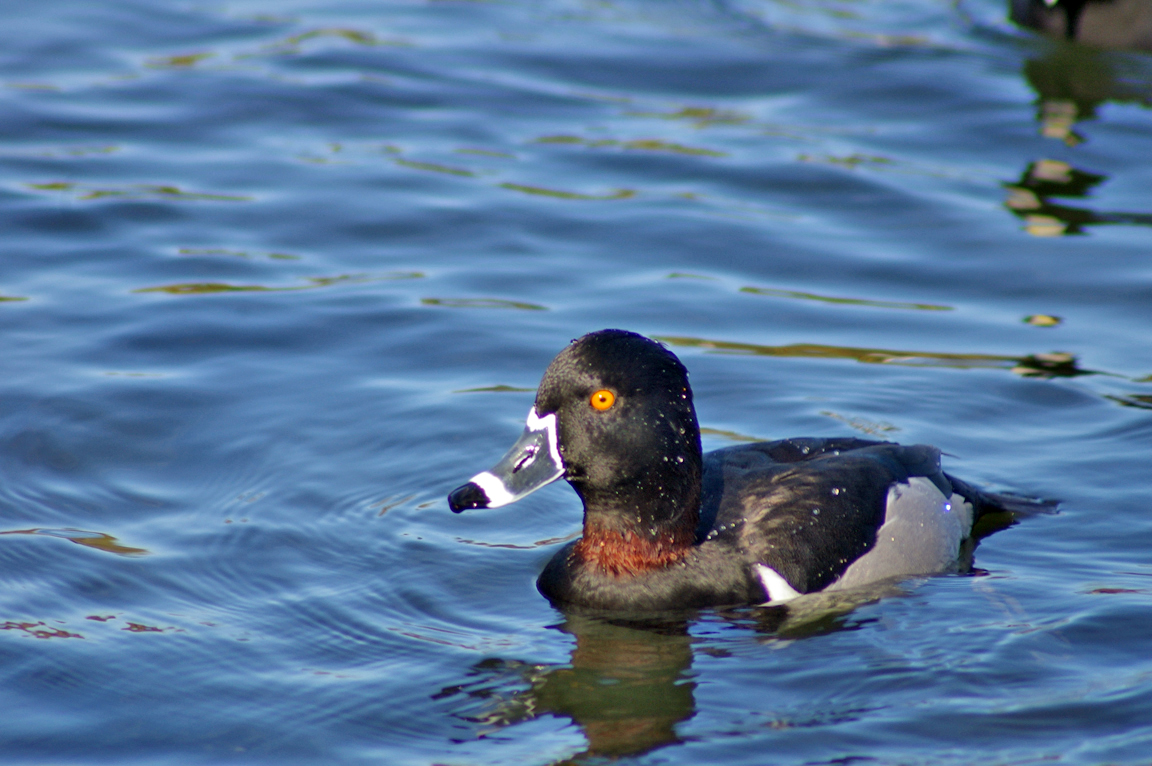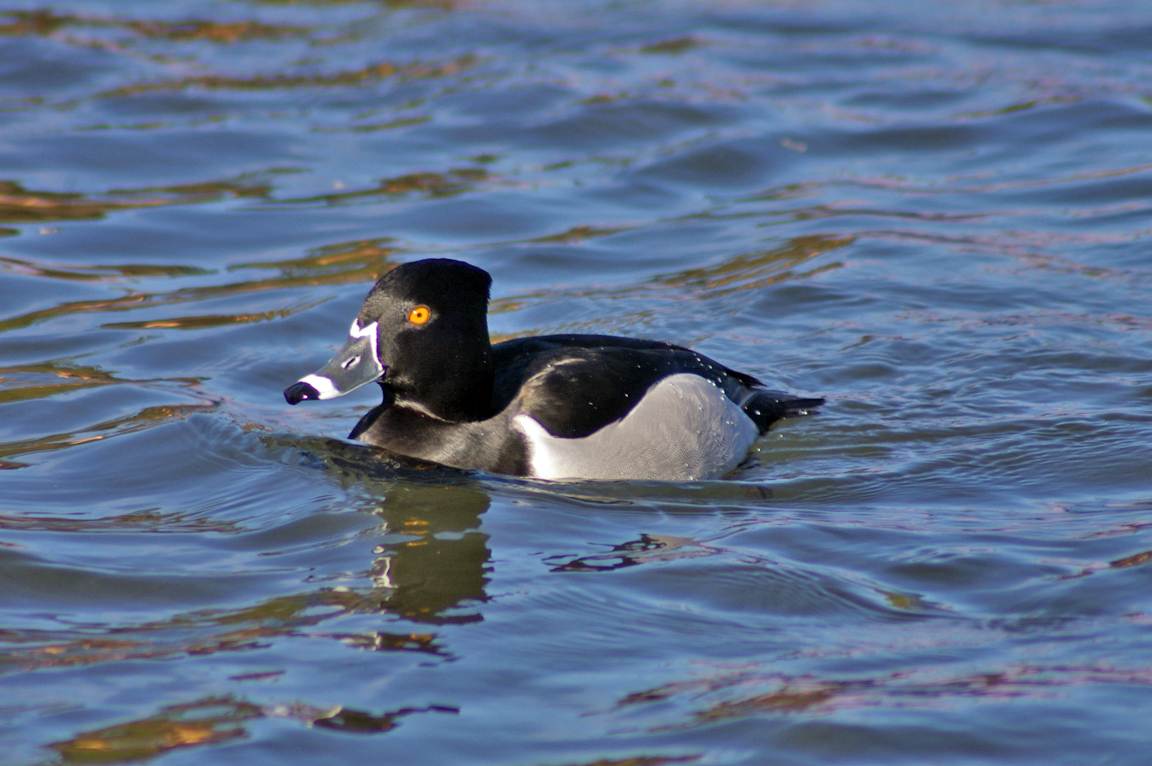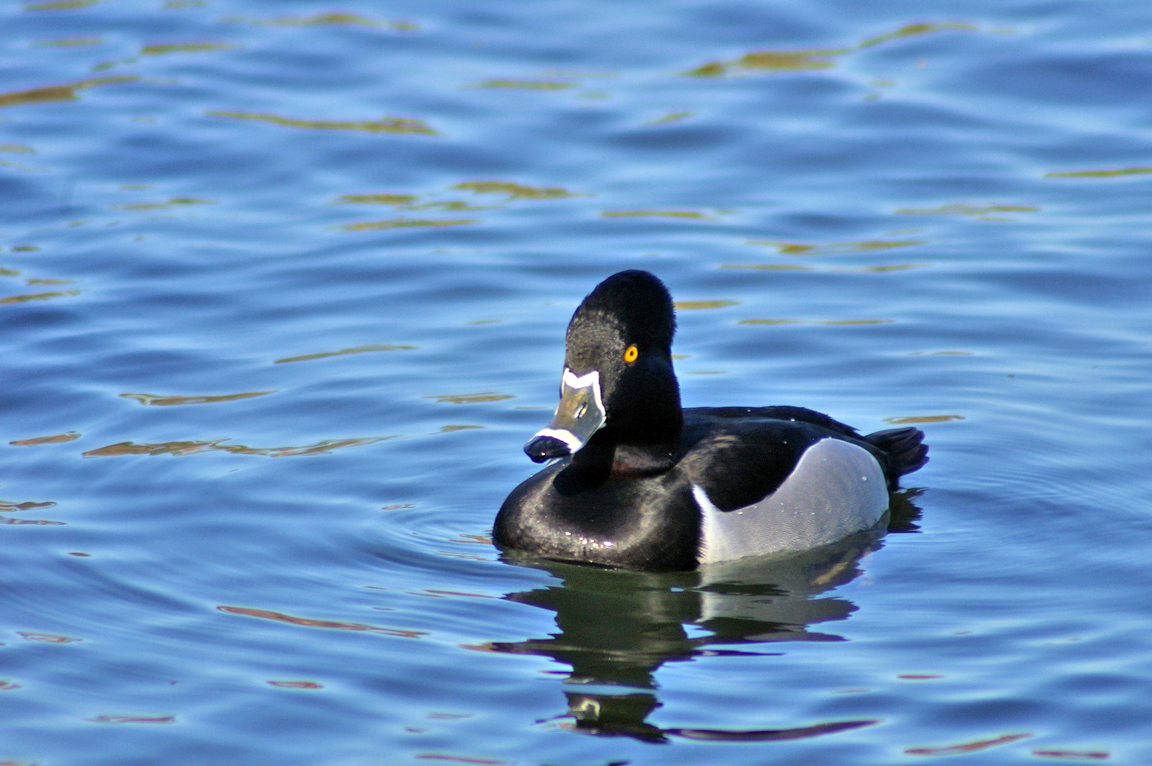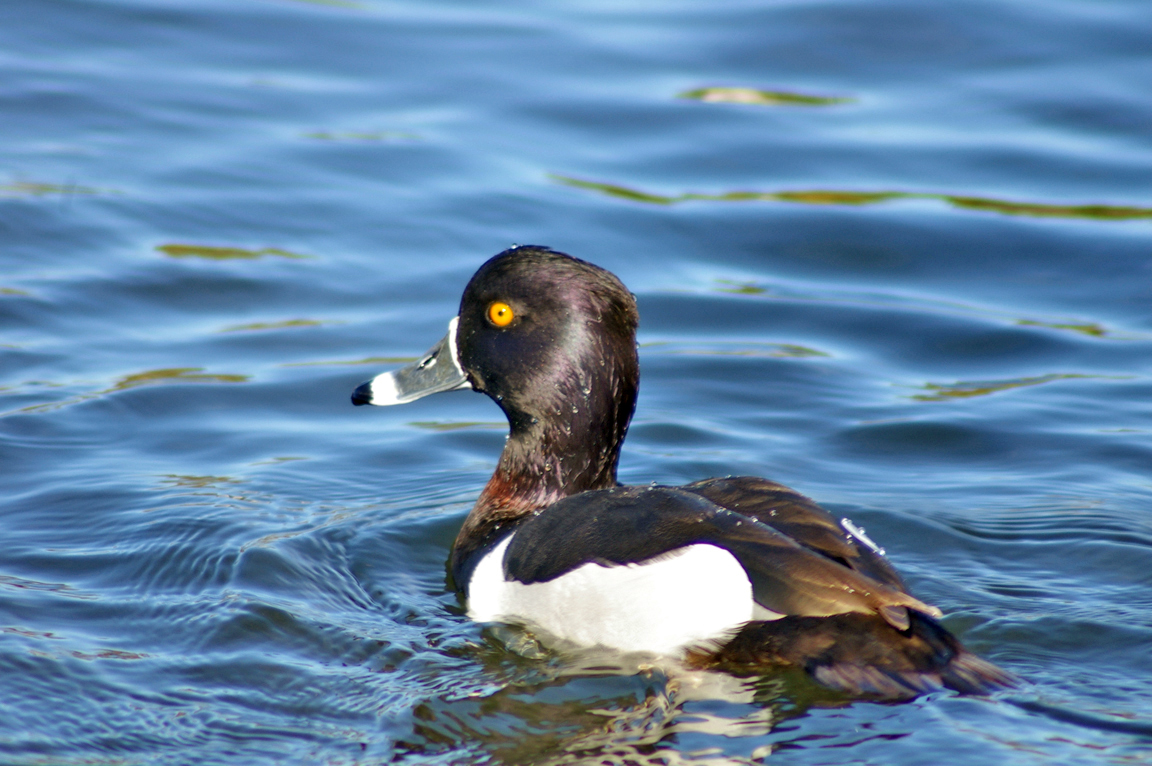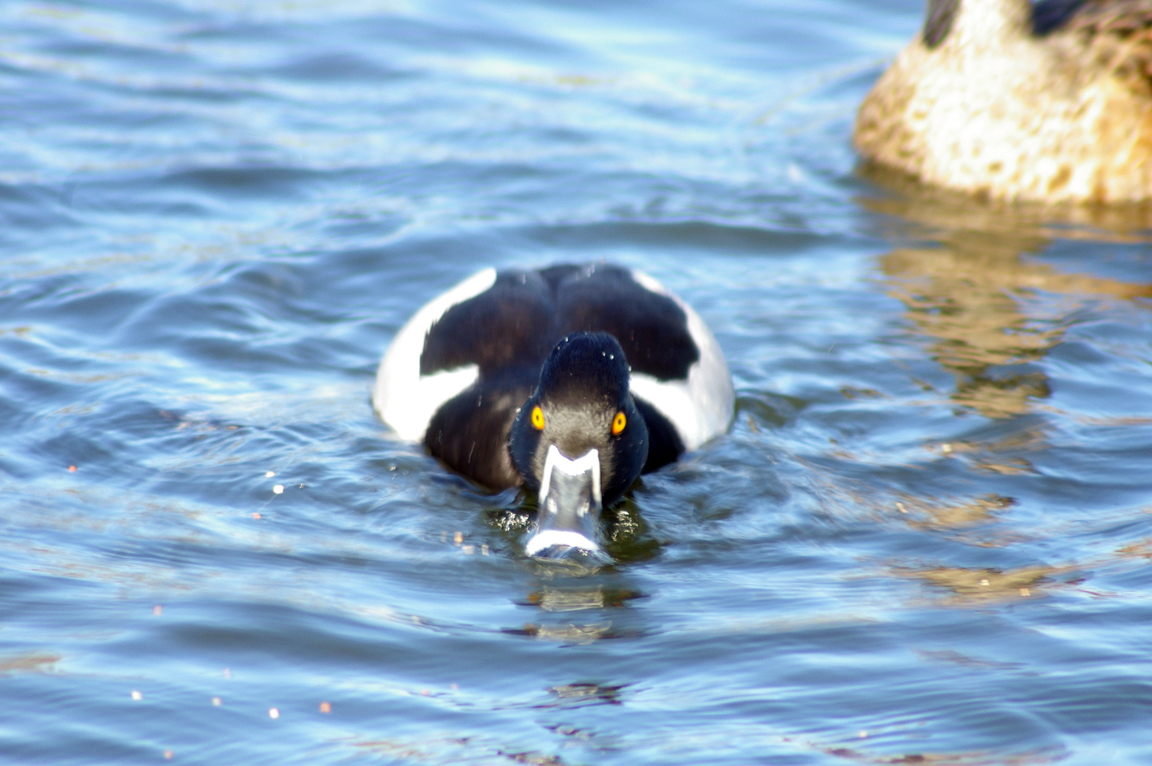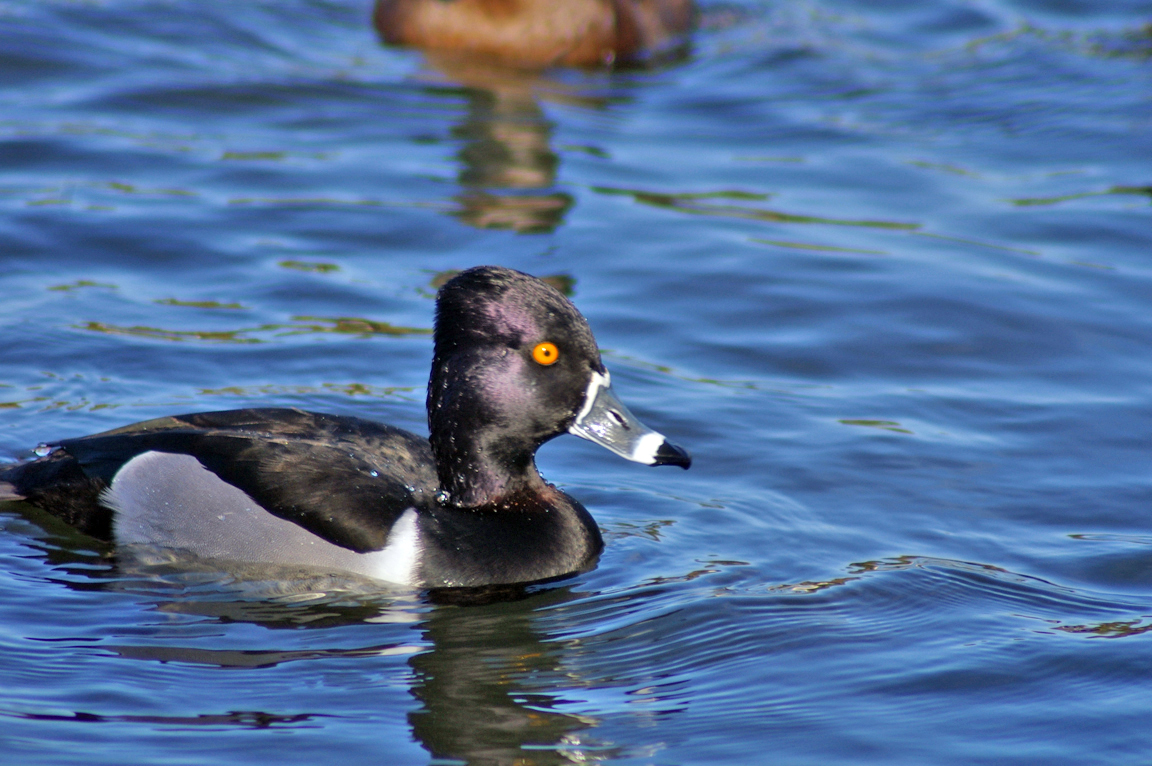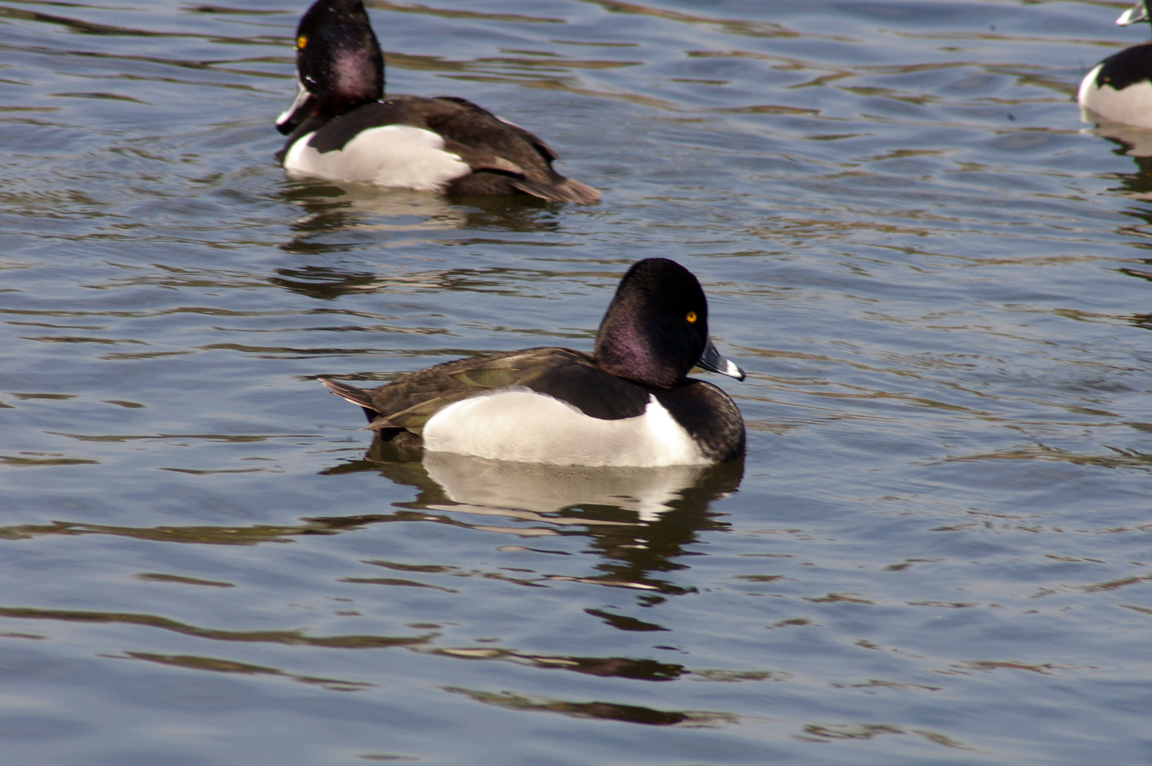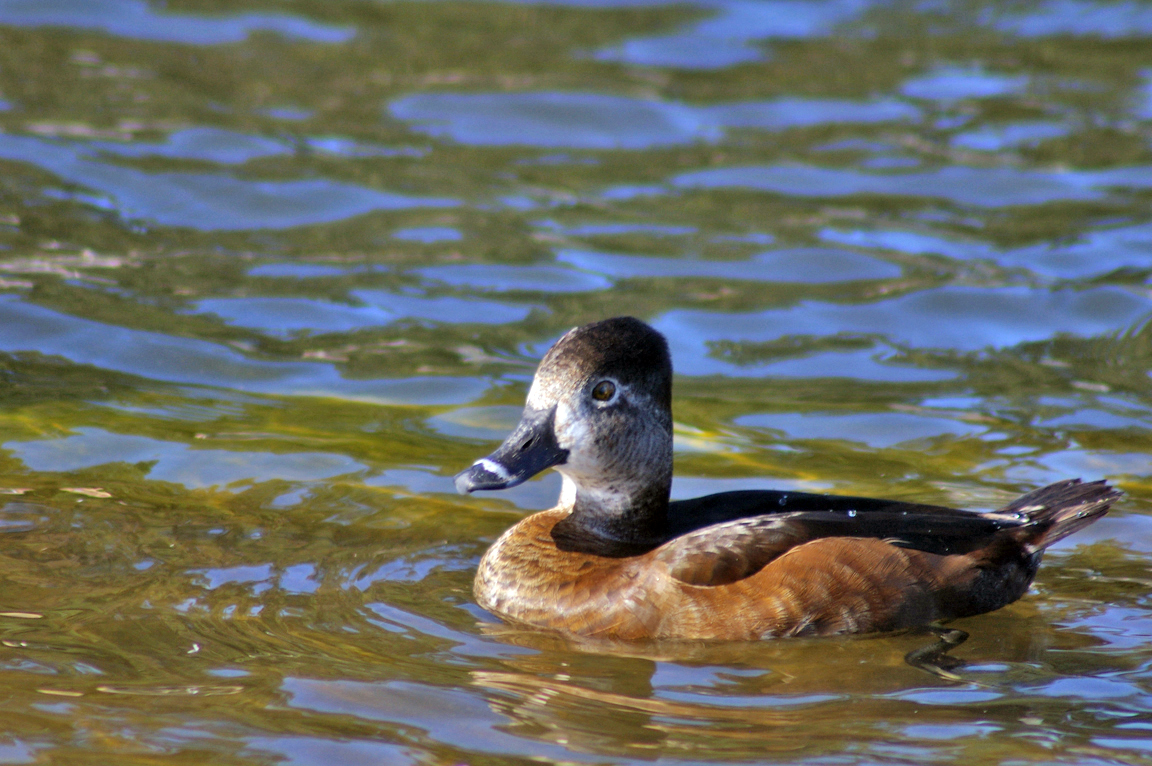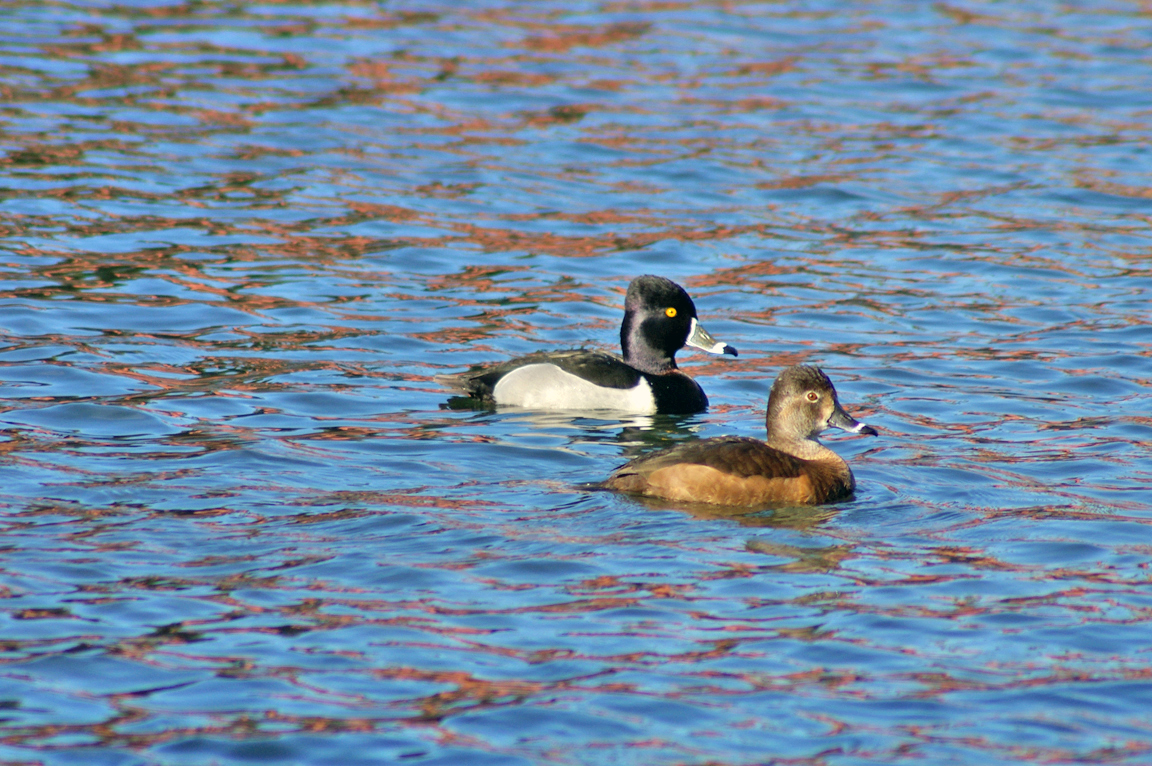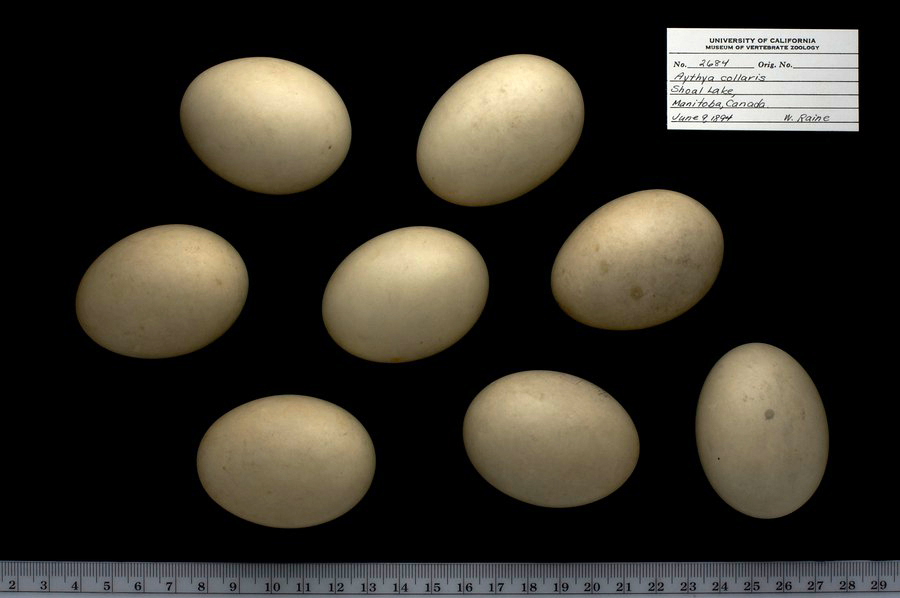|
|
|
 |
Ring-necked Duck
|
| Aythya collaris | |
The most common diving duck to be found on small ponds in migration, the Ring-necked Duck is more easily recognized by the bold white ring around its bill than the subtle purplish one around its neck.
Interesting Information
-
Both the common name and the scientific name "collaris" refer to one of the Ring-necked Duck's most inconspicuous field marks. Rarely visible in the field, the chestnut collar on the black neck is noticeable when the bird is in the hand. Such subtle characters would have been obvious to the people first describing the duck from dead specimens.
-
This species might better be called the "Ring-billed Duck," for its chestnut neck ring is usually seen only at close range, while the white ring on the bill can be a prominent field mark.
-
Because it never gathers in large flocks it has not been hunted extensively like some of its relatives. A fast flier, it undertakes longer migrations than most other diving ducks.
Description
Adult Description
-
Size: 39-46 cm (15-18 in)
-
Wingspan: 62-63 cm (24-25 in)
-
Weight: 490-910 g (17.3-32.12 ounces) Medium-sized diving duck.
-
Bump or peak on back of head.
-
Bill bluish with white ring near black tip.
-
Male with black head, chest, back, and rear end, gray sides, and a white stripe up the shoulder.
Sex Differences
Breeding male bold black-and-white; female drab brown with white eyering.
Immature
Similar to breeding female.
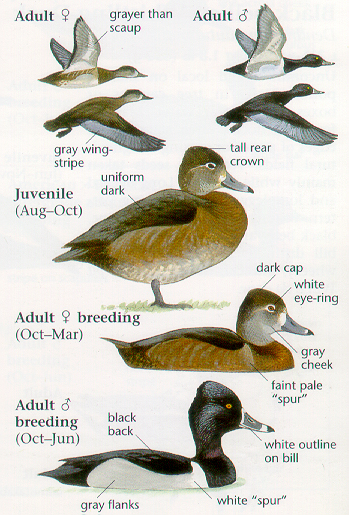
Photo taken from: The Sibley Field Guide by David Allen Sibley
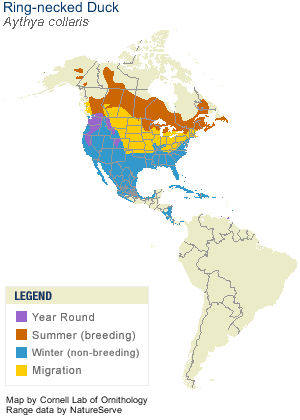
© 2003 Cornell Lab of Ornithology
|
Habitat |
|
Found on wooded lakes, ponds, and rivers; seldom seen on saltwater except in the southern states. |
|
Behavior |
|
Forages by diving from the water surface. |
|
Food |
|
Eats mostly aquatic plants and seeds, but also feeds on insects, mollusks, worm, and crustaceans. |
Taxonomy
| Kingdom: | Animalia |
| Phylum: | Chordata |
| Subphylum: | Vertebrata |
| Class: | Aves |
| Order: | Anseriformes |
| Family: | Anatidae |
| Subfamily: | Anatinae |
| Genus: | Aythya |
| Species: | Aythya collaris |
Similar Species |
|
|
Bird Sound |
|
Usually silent, courting calls soft and growly. |
|
Eggs look like this |
|
Photo taken from: ARCTOS Collaborative Collection Management Solution |
Videos
Ring-necked Duck
Male

